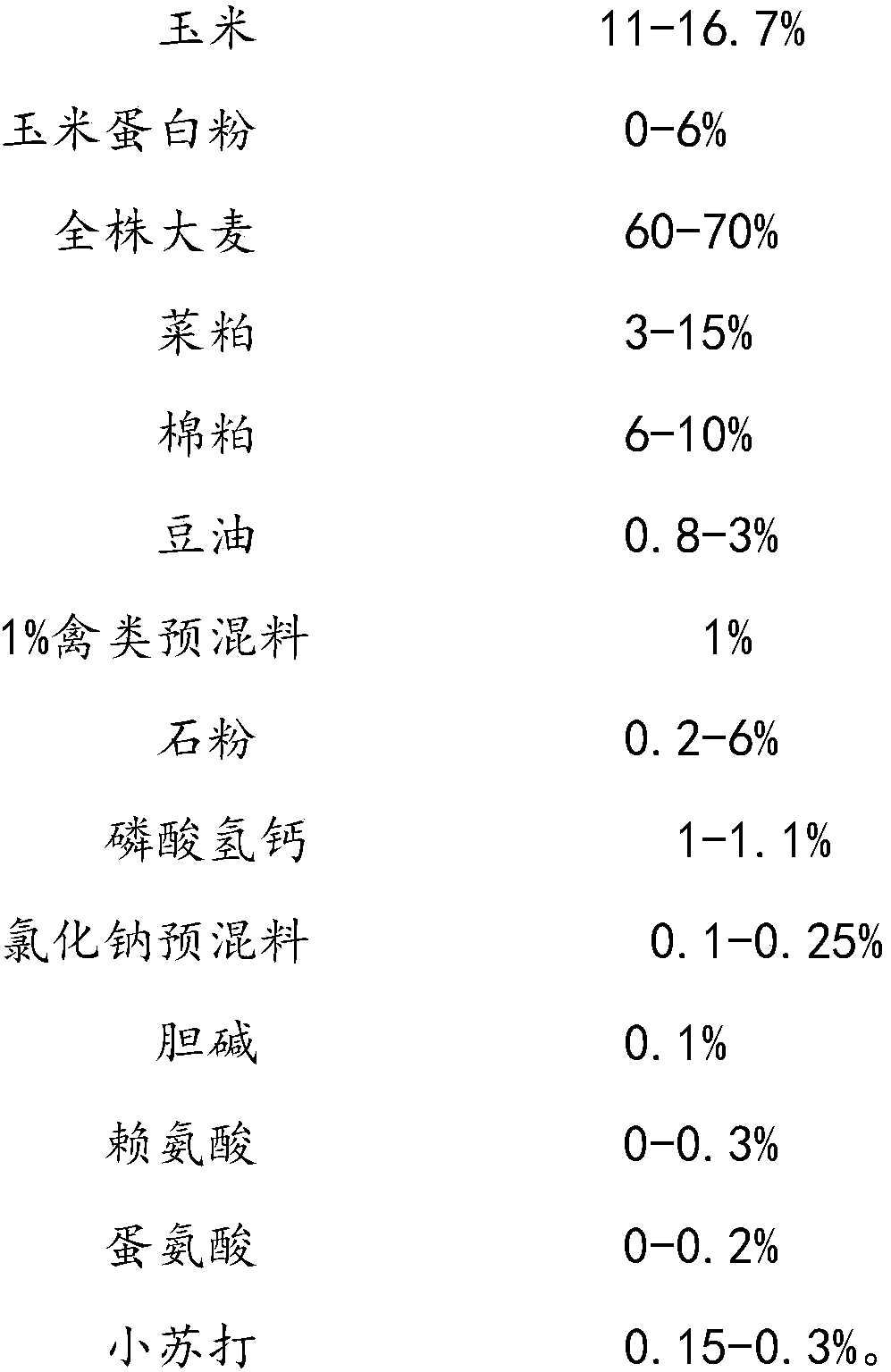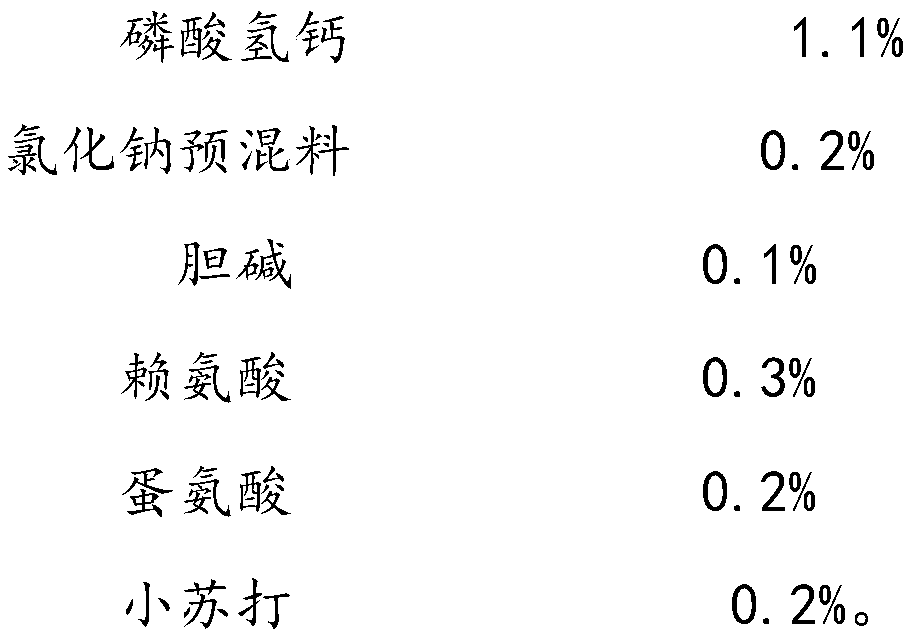Ostrich feed using whole plant wheat as major raw materials
A main raw material, ostrich technology, applied in the field of animal husbandry, can solve the problems of lack of scientific rationality, low feeding value, low efficiency and waste, etc., and achieve the effect of solving reproductive problems, improving ostrich physique, and balanced nutrition level
- Summary
- Abstract
- Description
- Claims
- Application Information
AI Technical Summary
Problems solved by technology
Method used
Image
Examples
Embodiment 1
[0027] After testing, it was found that six common mycotoxins (aflatoxin B1, deoxynivalenol, zearalenone, fumonisin, T-2 toxin and ochratoxin) were rarely detected in Yunnan barley, and none of them were detected. Exceeding the standard, its safety is significantly better than corn-based feed materials and wheat-based feed materials. The following table shows the measured values of the main nutrients of several kinds of barley and bran (in Yunnan).
[0028] Table 1 Measured values of main nutrients in barley products, whole barley and bran Dry matter basis, unit %
[0029]
[0030] It can be seen from the table above that the crude fiber content of the whole barley plant is about 20%. After testing, the β-glucan, amylose, and amylopectin contained in the barley seeds are 10.33%, 6.49%, and 37.30% of those on the basis of starch, respectively. %, β-glucan is a prebiotic, and the digestibility and absorption rate of amylopectin is also higher than that of amylose, so the...
Embodiment 2
[0034] Example 2: Comparison of corn-soybean meal-wheat bran type feed and whole plant barley feed
[0035] Table 3 Corn-soybean meal-wheat bran type ostrich three-stage feed
[0036]
[0037]
[0038] Table 3 shows the typical three-stage corn-soybean meal feed for poultry. It can be seen from the table that the crude fiber level of the three feeds is about 3%, which cannot meet the nutritional needs of herbivorous poultry, especially for breeding birds. Lead to overweight birds and affect egg production and reproductive performance.
[0039] Table 4 Three-stage diet of whole-plant barley-type ostriches
[0040]
[0041]
[0042] Table 4 shows the whole-plant barley-type feed. It can be seen from the table that in the three-stage feed, the whole-plant barley accounts for about 60% to 70%, replacing soybean meal and more than 80% of corn. The dietary crude fiber level It has increased by 4 times, completely changed the structure and crude fiber properties of corn...
Embodiment 3
[0044]Feeding experiment 1: The control group and the test group each selected 100 healthy chicks with equal male and female sex, 20 birds per circle, and 5 repetitions in each group; when the ostriches were 14 days old, the initial body weight was recorded, and the chicks were fed with rations. (for the whole concentrate ration); two-month-old weighed the weight of young birds, replaced it with a fattening ration (fixed fine-to-rough ratio of 80:20, coarse material was vegetable waste of the season), weighed at 6-month-old, and weighed the pan material. Statistics of weight gain, feed consumption and number of live birds.
[0045] Table 5 Effects of corn-soybean meal-based diets and whole-plant barley diets on growth performance of ostriches
[0046]
[0047] It can be seen from the table that there is no significant difference in the growth of the two groups of ostriches in the brooding stage, but 4 young birds died of diarrhea in the control group, and the survival rate ...
PUM
 Login to View More
Login to View More Abstract
Description
Claims
Application Information
 Login to View More
Login to View More - R&D Engineer
- R&D Manager
- IP Professional
- Industry Leading Data Capabilities
- Powerful AI technology
- Patent DNA Extraction
Browse by: Latest US Patents, China's latest patents, Technical Efficacy Thesaurus, Application Domain, Technology Topic, Popular Technical Reports.
© 2024 PatSnap. All rights reserved.Legal|Privacy policy|Modern Slavery Act Transparency Statement|Sitemap|About US| Contact US: help@patsnap.com










